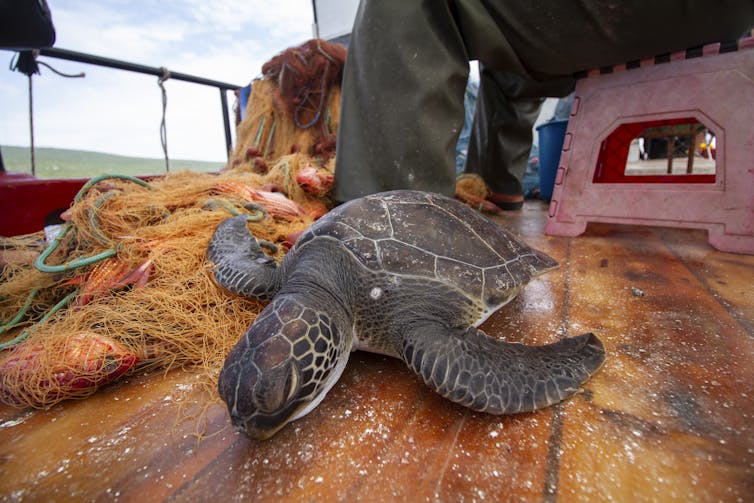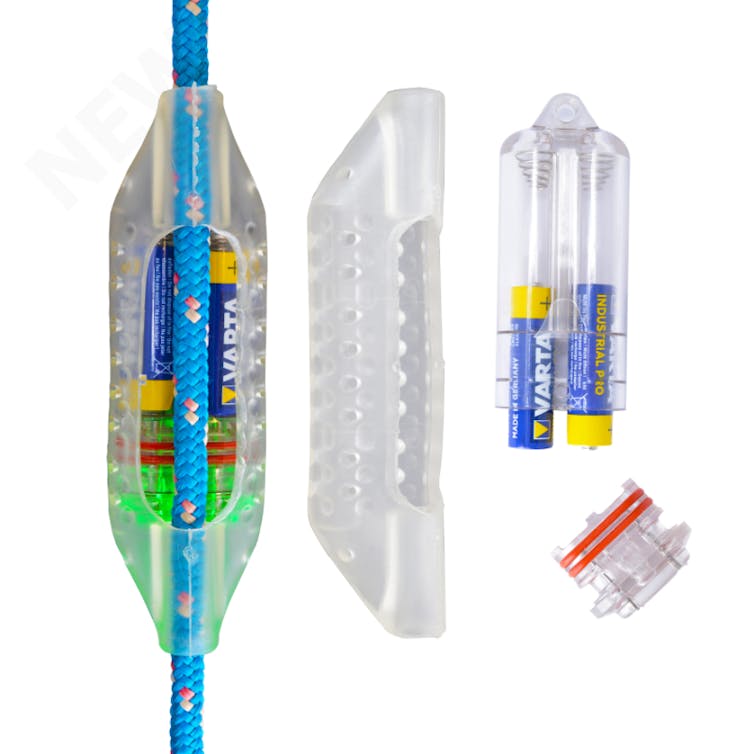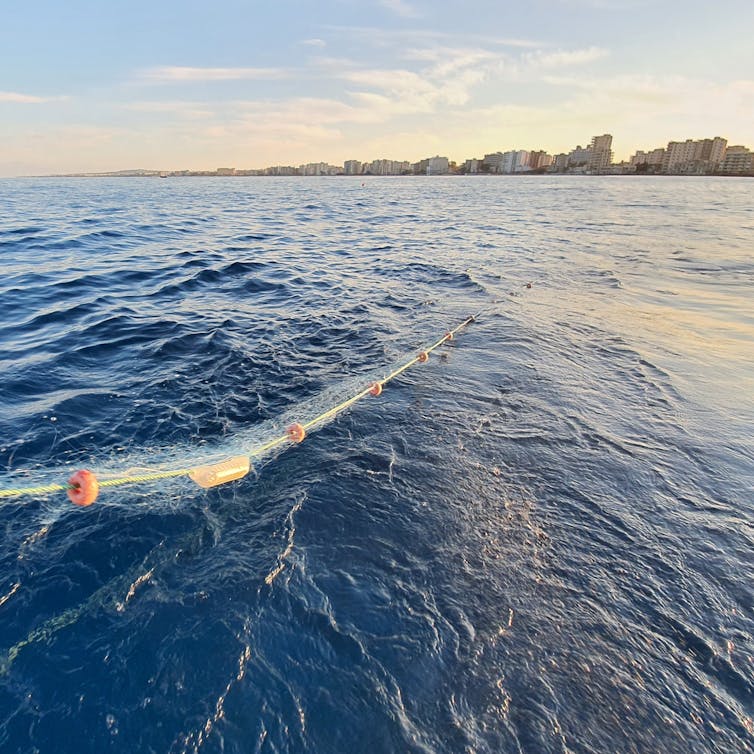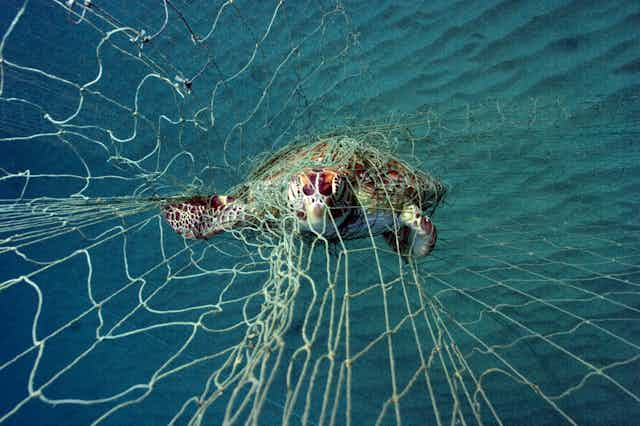Bycatch in fishing gear is one of the biggest threats to sea turtles. But these creatures are particularly sensitive to green light so they’re less likely to get caught up in fishing nets fitted with green LED lights.
Since 2014, a team of marine biologists and I have been trialling ways to reduce turtle bycatch using lights in nets as a deterrent. Our recent study shows that these lights can reduce bycatch by approximately 40%.
The adult green turtles I work with in Cyprus are over a metre long and weigh more than 100kg. The females nest and lay their eggs on Alagadi beach, but only one in a thousand of their tiny hatchlings will survive to adulthood decades later.

Once they have left their nesting beach, young green turtles often wash up dead. Thousands of turtles are killed annually due to the activities of the Turkish Cypriot fleet alone.
With fish stocks in decline, fishers are using more nets to catch more fish – making bycatch more likely. That effectively negates any conservation efforts to help protect the young green turtles that feed on the coastal seagrass beds.
In this part of the Mediterranean Sea, fishers leave kilometres of net on the seabed overnight in these seagrass habitats. When they haul them in the morning they often find drowned turtles entangled.
But quantifying bycatch is not easy, especially in Cyprus, where hundreds of small fishing boats use different types of fishing gear. It’s even harder to identify the most dangerous fishing methods and prioritise possible solutions.
Together with local fishers and marine authorities, we have monitored impacts on marine life by deploying onboard observers and having fishers report their catches of dolphins, sea turtles, sharks, rays and monk seals.

The first lights we trialled were effective, and Cypriot fishers corroborated the positive results from trials in Mexico. But they found these prototypes difficult to use, with moving metal parts that got tangled in the “set nets”.
These long panels of net which fishers deploy on the seabed are stored in buckets. Due to tangling, the lights needed to be attached and removed on every fishing trip.
They’d often stop working and were not specifically designed for these set nets. At US$40 (£30) per light, the cost of fitting 3km of net is US$12,000. That’s way more than the annual cost of replacing nets that have been cut to release turtles that have got caught.
To make this concept more feasible, we teamed up with Devon-based marine engineering company FishTek in 2018 to develop a scalable solution. After years of trials, we developed a more efficient solution known as NetLights, which costs just US$8 per light.
Net illumination
These battery-powered lights that can be easily attached to huge fishing nets reduce bycatch of turtles by around 40%. But more trials are needed.
Because the green turtles living around the Cyprus coast keep dying, there aren’t that many of them, so catch rates remain low. Over time, more trials will provide more accurate results.

Thousands of NetLights have been made available to 50 fishers in Cyprus as part of a broader trial. Most are pleased with the target catch rates and ask for more. They’d be most likely to use them if costs are subsidised or if bycatch reduction tech like this is made a legal requirement to safeguard turtles from particular types of fishing net.
Every fisher uses a slightly different net set up and it’s hard to please them all. Ideally, the lights need to be slightly smaller, lighter and more buoyant so that they can replace the floats that fishers use to stand the nets in the water, without adding more bulk.
Other solutions
Aside from training fishers to rescue turtles that get entangled, other existing bycatch reduction methods include turtle excluder devices that fit inside the neck of trawl nets. While small fish and shrimp can pass between the bars to the back of the net, larger turtles bump against the metal grid and can escape through a flap in the mesh net.
In the US, bottom trawlers catching shrimp have to use turtle excluder devices to provide an escape route for turtles and other large objects.
Circular fishing hooks which replace “J” shaped hooks are less likely to snag turtles. These have been rolled out in large-scale commercial tuna and swordfish fleets on the high seas. But their success has been variable and in some cases reduced target catch can make them economically unsustainable.
If not enforced by governments, measures like these may be requested from supermarkets as part of a bycatch audit to promote best practice within the supply chain.

In 2023, fisheries policy in northern Cyprus was updated to include some no-take zones and restricted areas to protect fish stocks and other vulnerable species. If properly enforced, both the sea turtles and the fish that fishers rely on will benefit from these measures.
By rolling out more NetLights in set net fisheries that are a top priority for bycatch management, and monitoring their effectiveness against the baseline data we now have, there is huge scope to improve the chance of survival for green turtles.

Don’t have time to read about climate change as much as you’d like?
Get a weekly roundup in your inbox instead. Every Wednesday, The Conversation’s environment editor writes Imagine, a short email that goes a little deeper into just one climate issue. Join the 30,000+ readers who’ve subscribed so far.

